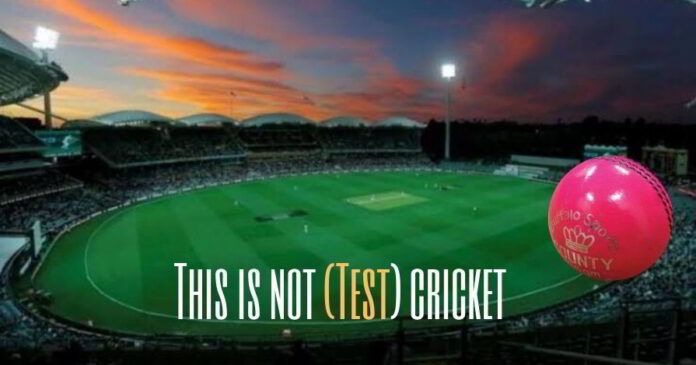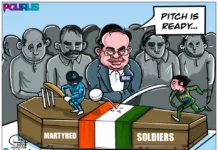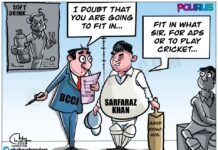
Enough damage has been done through the mindless culling of cricket. Let the shorter format get even shorter — a little more destruction makes no difference
Several reasons have been offered in favour of the day-night (D-N) cricket Test matches, but the closest to being honest have been two: Profit and entertainment. The least honest one is that the D-N version will arrest the decline in Test cricket’s popularity.
For some decades now, cricket across the world and in India, in particular, has allowed itself to be dominated by money and entertainment considerations. The art and science of the game becomes a blurred reality. For several years since cricket began to be played in an institutionalised fashion, it was the five-day Test version which ruled the roost. Crowds came in droves and watched the contest between the bat and the ball. The matches generally lasted for full five days, though sometimes the result came earlier. At times, of course, the matches proved to be boring when the results could be foretold. The mandarins of the game concluded that something must be done, and so they brought in the 60-over one-day matches to prop up the entertainment value. This was further tweaked to the 50-over format.
Those who are truly concerned with falling attendance for Test matches should ponder over the actual reasons. Has not the plethora of shorter formats not been a contributor to the crisis?
Entertainment naturally followed, and so did money — loads of it. This encouraged the game’s administrators to explore more similar avenues. The T-20 was thus born. More entertainment, more money. Cheer-girls in short skirts made an appearance, dancing away when fours and sixes were scored. Players wore colourful dresses, and the atmosphere was that of a carnival. As if even this is not enough, there is the talk of a 10-over format. Who knows, we may someday have a five-over tournament as well!
This is not cricket but a sham in the name of cricket. But the administrators of the game will not say so. Nor will the organisers. Neither will the players. The money flow is simply too tempting to talk about the aesthetics of the game. The only one’s grumbling are some of the old-timers who treated and played cricket reverentially and revelled in the technical intricacies of the game. But they have brushed aside as fossilised admirers of status quo.
The Indian Premier League (IPL) was born from the womb of profit and entertainment. Not surprisingly, it soon became mired in scandals of spot-fixing and money laundering. Such things happen when a game is exploited for lucre at the cost of every other consideration, including ethics. But the IPL is a cash cow and the stakeholders — past and present — including big and iconic names — have preferred to turn a blind eye to the decimation of values that cricket had been known for.
The argument placed in support of the D-N Tests is that it will bring in crowds which have over the years veered away from Test format. The evening festive environment, the pink ball, and the fact (according to cricket mandarins) that more cricket-loving people would be free in the evenings to visit the stadiums have been cited as some of the compelling reasons in favour. It is possible that initially, the novelty factor will draw in the crowds, but it may not be sustainable.
One thought that people are today even less free than before in the evenings. Their professional life stretches beyond the normal working hours, and the Internet has made it possible for them to work from home. On the personal front, there are greater obligations with their children taking up extra-curricular activities such as attending dance or song or martial art classes. They can manage to devote half a day or even a full day for the one-day matches, but it would be futile to expect them to attend to the D-N Tests for a full five days.
Unless, of course, the idea is to hope that the D-N Tests do not last for five days. Nobody knows how the new format will play out. There are concerns among experts that, given the dew conditions as evening sets in and the technicalities of the pink ball, the match could well fold up in three days. If that becomes the norm, how will the D-N system promote Test cricket?
Those who are truly concerned with falling attendance for Test matches should ponder over the actual reasons. Has not the plethora of shorter formats not been a contributor to the crisis? Is it not true that many players who are over-exposed to the shorter formats, especially the T-20 version, come to play Test matches with a similar mindset ingrained in them — and make a mockery of the Tests, resulting in the matches folding up in under four days?
There are those who dispel doubts by taking a defensive posture. They say that the D-N format is an experiment and one has to wait and see how it pans out. In other words, nobody is saying that the new system will replace the old. This begs two questions: If it fails, are we not back to square one? What then will be done to promote the old Test format?
An analogy with the Hindi film industry would be apt here. In the eighties, the industry was gripped by the desire to dish out ‘entertainment’, and in its zeal it effectively buried quality. These sub-standard films made money at the box office, no doubt, but they also demolished the larger social message that the powerful medium was supposed to spread. Eventually, the senseless plots and the even more senselessly acting began to fail as the audiences called the bluff.
Enough damage has been done through the mindless culling of cricket. Let the shorter format get even shorter — a little more destruction makes no difference. But leave Test cricket alone, in the pristine form it has been. Find ways other than the hare-brained D-N idea to promote it.
Note:
1. The views expressed here are those of the author and do not necessarily represent or reflect the views of PGurus.











Is it or is it not Saharan dharma then?